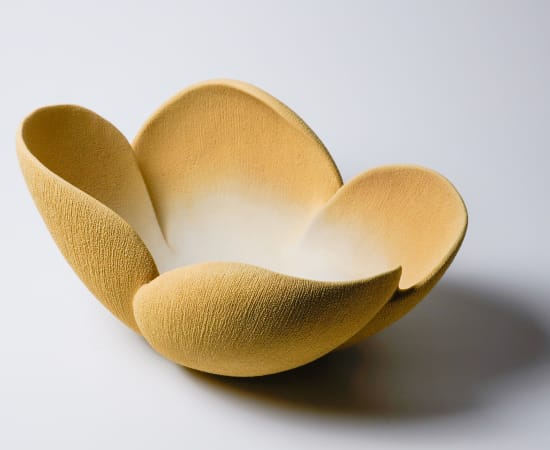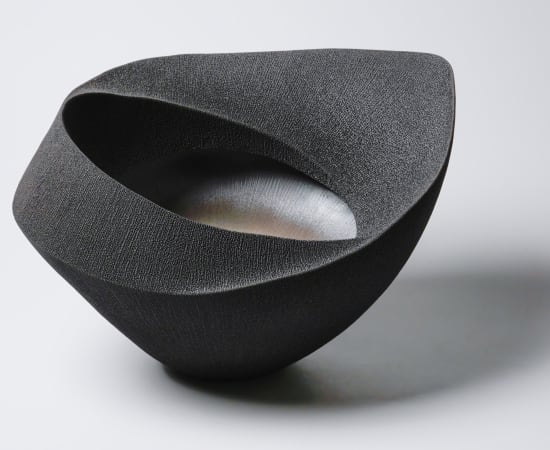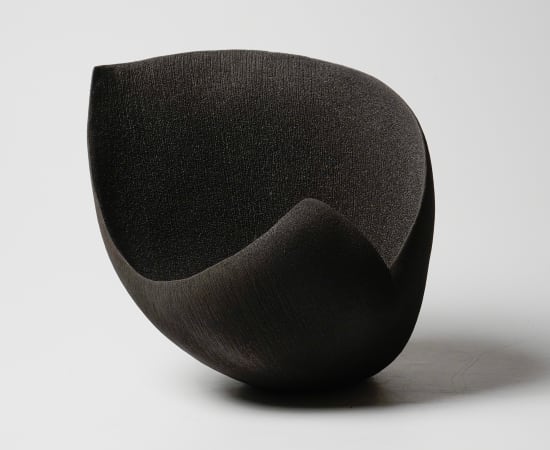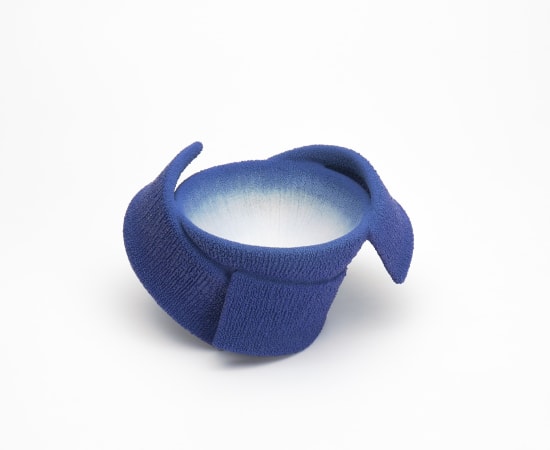Like wings unfolding, about to take flight, Matsutani Fumio’s gliding elegant vessels are an abstraction of movement.
Matsutani Fumio
Born in 1975, Matsutani Fumio is a Japanese contemporary artist, sculptor and potter who lives and works in Ehime. He is known for his are meticulous vessels that feature complex surfaces fired over several months. The polychrome surfaces of his stoneware ceramics show beautifully textured surfaces applied with a transparent glaze.
Matsutani's sculptural vessels converge on three key aspects in his artistic expression: Movement, Color, and Surface. These can also be characterized in his work as his inquiry into how movement can be shown through architectural forms that expresses aspects of form and function in harmony with one another.
He begins working on his works months in advance. His meticulous hand is seen in the hand-incised textural surfaces that showcase a perfect, monotone yellow, blue, black, or brown. Matsutani’s inquiry into color, surface, and form has frequently been associated with architectural forms: Though he has never studied architecture as his main profession, he has taken great interest in the field:
“When I go to a bookstore, I tend to go to the architecture section. My teacher, Masayuki Imai, had two tearooms in his studio in Hiroshima.”
Masayuki Imai had designed and built these two tea rooms with architects for over a year. With Matsutani observing this process, he began to have an understanding of the architectural design process, bolstering his affinity towards architectural forms and thinking. Years earlier, he watched the work of a shrine carpenter for a great while, observing his craftsmanship and cultivating a deeper relationship with craft principles in Japan. While he draws retroactive influence from these events, he currently is also influenced by Western modernist design, a field whose purveyors often work in the intersection between architecture and design. Matsutani is interested particularly in furniture from the 20th century through the likes of Frank Lloyd Wright, and Bruno Taut.
Matsutani’s sculptures situate themselves within the term “environmental aesthetics”: not only does his artistic expression contemplates the spaces his vessels occupy, but he also treats the object environments as transactional or participatory, going beyond formal aesthetics that tend to separate object, subject, and space as distinct entities. This relational aspect of Matsutani’s work speak to a core aspect of discussions around the binary categories of form and function in contemporary ceramic dialogue: the beholder moves moves around Matsutani’s vessels. The surfaces glisten in the light, refracting light in various ways. Under raking light, the sheen of these vessels shift and glows gently. The beholder might recall the flash of a raven’s feather that flickers in sunlight. Like wings unfolding, about to take flight, Matsutani Fumio’s gliding elegant vessels are an abstraction of movement.
Matsutani has won many awards in a competitive Japanese ceramic society, and has been exhibited multiple times internationally and domestically. He blurs the line between form and function, utilizing textured polychrome surfaces to draw attention to the ceramics surface.

















